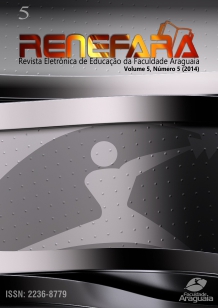CAUSAS DA INADIMPLÊNCIA NAS INSTITUIÇÕES DE ENSINO SUPERIOR E MEIOS DE REDUZI-LA
Keywords:
Inadimplência escolar, Instituição de Ensino Superior, Educação.Abstract
A expansão das Instituições de Ensino Superior particulares percebida nas últimas décadas, desde aimplementação do Plano Nacional de Educação (PNE), se mostra uma faca de dois gumes. Por umlado, favorece o acesso de diversos estudantes, impossibilitados de ingressar em uma instituiçãopública devido a escassez de vagas disponíveis; por outro, devido a dificuldades no pagamento das
mensalidades, pode trazer uma dívida para o aluno e dificuldades financeiras para a Faculdade ouUniversidade, que tem a mensalidade como uma de suas únicas fontes de renda. O artigo pretende
demonstrar, por meio de pesquisa exploratória com análise descritiva de dados, quais são as causasmais frequentes da inadimplência, assim como sugerir formas de evitá-la ou, ao menos, atenuá-la. A
pesquisa foi realizada em um IES privada na cidade de Goiânia-GO, onde constatou-se que, apesar doaumento da inadimplência, as justificativas para que ocorra não exprimem grandes diferenças entre si,mantendo-se um padrão que depende de iniciativas da própria IES para que seja modificado.
Downloads
Issue
Section
License
The copyright of the published articles will be transferred to the Uniaaraguaia Magazine, allowing its subsequent reproduction as transcription and with due citation of source. In the event of acceptance and before the publication of the article, the plaintiff (s) shall write a statement formally transferring copyright to the magazine.
The author may also print and distribute copies of his article, provided that he mentions that the rights belong to the Uniaaraguaia Magazine.
Author rights include the right to reproduce in full or partly by any means, distribute this article, including figures and photographs.
By submitting originals to the Uniaaraguaia magazine, the author or authors express agreement with the following terms:
a) Authors maintain copyright and grant Uniaraguaia magazine the right of first publication, with the work simultaneously licensed under the Creative Commons Attribution license that allows the sharing of work with recognition of the authorship and initial publication in this magazine.
b) Authors are authorized to assume additional contracts separately, for non-expiration distribution of the work version published in this magazine (eg publish in institutional repository or as book chapter), with recognition of authorship and initial publication in this journal.
c) Authors are allowed and are encouraged to publish and distribute their work online (eg in institutional repositories or on their personal page) to any point before or during the editorial process, as this can generate productive changes as well as increase the impact and citation of published work.

